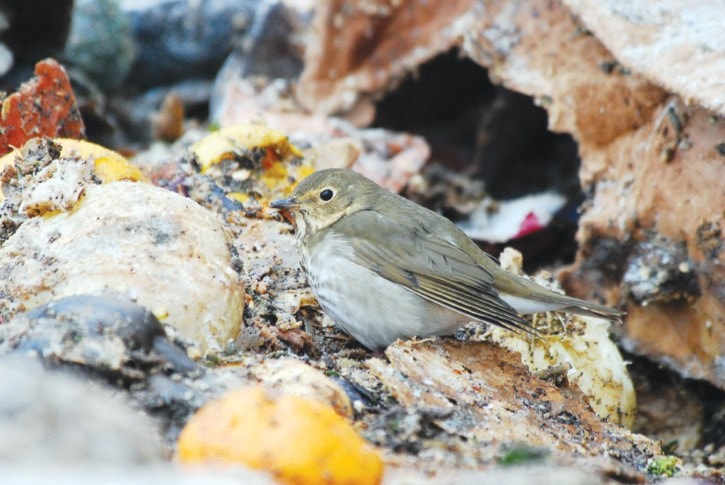This winter continues to produce some unusual species. Earlier I mentioned the Wilson’s Warbler in Nakusp. This is possibly the first winter record for the Kootenays. This bird was first seen in November at a large compost bin. It remained at the compost, where it was finding both food and warmth, until well into January.
The weather turned cold and snowy on January 14 and I was both surprised and pleased to see the bird again on Jan. 16. Unfortunately, that was the last date on which it was seen. Whether it perished in the cold, or left to look for greener pastures, we will never know, but in either case, it seems unlikely that it survived.
During this same period, a Nashville Warbler was regularly visiting some grapevines in Nelson. Like our Wilson’s, this bird is an insect eater and normally does not remain in northern climes in winter.
The bird seemed to be doing well with a steady supply of fruit to eat; many insect eaters will also eat fruit. The last I heard the Nashville Warbler was still visiting the grapevines.
On January 19, I made one last visit to the compost bins in case the Wilson’s Warbler was still lurking somewhere close by. I did not find it, but was amazed at what I did see – a Swainson’s Thrush.
This is even more exceptional that warblers in winter. Swainson’s Thrushes normally winter from Southern Mexico to South America. I actually saw several when I was in Peru in November.
Over the years, there have been a number of reports of this species in B.C. in winter, but many have been thought to be Hermit Thrushes which were misidentified. Based on what I’ve been able to determine in the last few days, this is the first report of a Swainson’s Thrush in B.C. in winter that has been confirmed with a photograph.
Why so many unusual birds trying to over-winter this year, in regions where they should not be? Perhaps it’s coincidence; perhaps the very mild weather during the early part of the winter played a role. The latter doesn’t entirely explain it since birds like warblers and some thrushes migrate instinctively, and should have been long gone before they knew anything about the forthcoming winter.
Another possible explanation is that something abnormal delayed their departure, perhaps a minor injury. The season may have progressed by the time they recovered and the migration urge was somehow interrupted. Under normal circumstances they would perish fairly soon, but maybe this is where the mild winter comes into play. Some other factor caused them to be here, but the mild winter allowed them to survive here.
Keep your eyes open, what’s next?!
